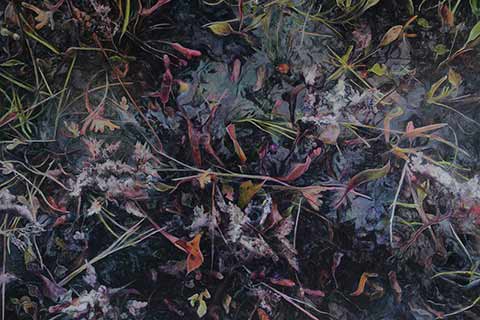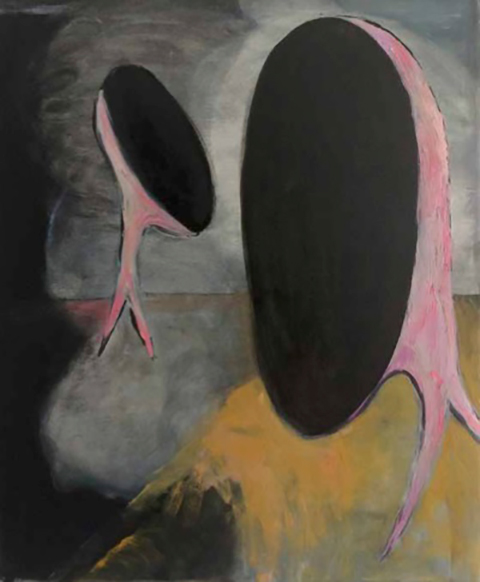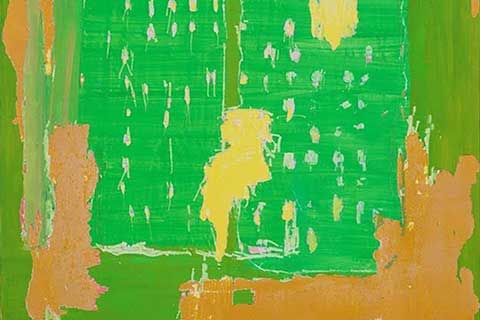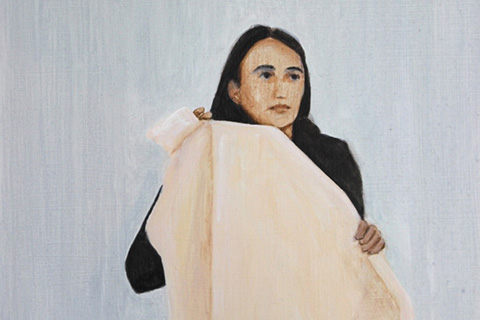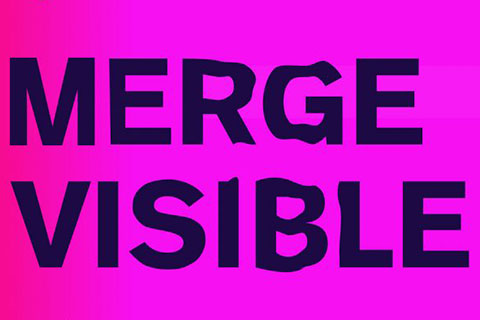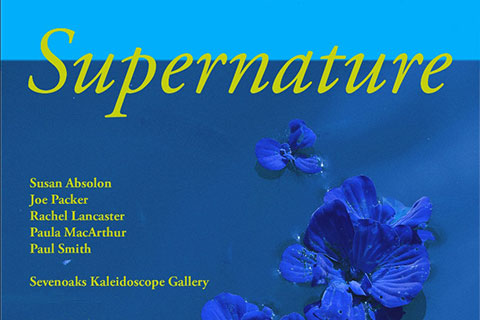Beyond the Surface
Six abstract painters: 28 March – 14 June 2018
This exhibition presents the work of six painters working with abstraction: Hanz Hancock, Patrick Morrissey, Marion Piper, Julie Umerle, Piers Veness and Simon Zabell.
Beyond the Surface is part of the Contemporary British Painting exhibition programme at The Crypt in Marylebone Church, curated by Piers Veness and organised by Square Art Projects.
The Crypt, St Marylebone Parish Church, 17 Marylebone Road, London, NW1 5LT
Exhibition dates: 28 March – 14 June 2018
Open times: Mon-Fri 9am-5pm, Sat 9am-4pm, Sun closed.
Occasionally The Crypt closes for private meetings, you can phone ahead to check times on 020 7935 7315 or 07809330592. Admission Free.
Download the Beyond the Surface catalogue.
Read a review by Jillian Knipe.
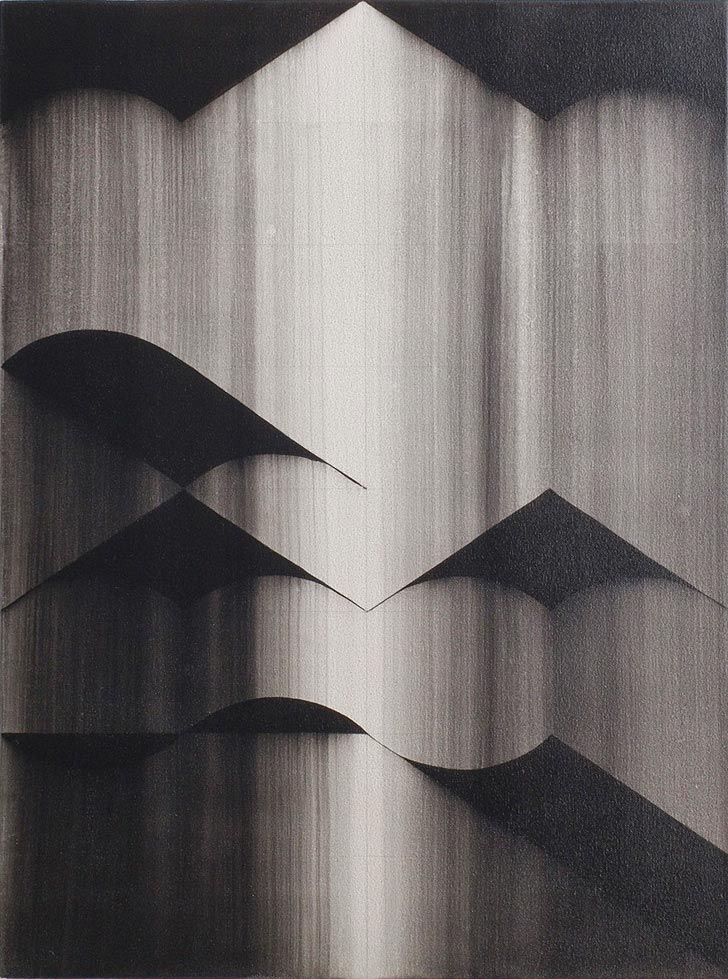
As a society we are losing the ability to look for a sustained length of time, our gaze now reduced to a glimpse. So accustomed are we to seeing images that they hardly register, perhaps pictures themselves are now losing their value. In this regard digital media has a lot to answer for: over the course of the last decade, the quantity of images that we consume on a daily – or even hourly – basis has ballooned in direct proportion with the invasion of screens in our public and private personal space. According to a 2015 article in the New York Times, more than a trillion photos are taken every year. Where looking at an image was once a luxury to be savoured – think back to church paintings, engravings, even early photography – today an image barely makes a mark on our consciousness, so fleeting is it. As a result, our visual attention span is shortening: images have become a kind of constant enveloping feature of our habitat, always present but to which we now pay little attention.
Furthermore, the majority of images that bombard us in our pervasive digital lives are readily digestible, without the need for intellectual effort – in fact their success depends wholly upon their directness. Due to the vast quantity of images that vie with one another for our attention, the more direct the image the better the chances it has of registering in our minds. Consequently, we are losing our ability to look with depth at images, to see beyond the surface.
This therefore presents a serious challenge for those of us in the realm of painting. A painting asks us to spend time with it, the more time the better, and to reflect, investigate, imagine. But if visual audiences are now looking for just a fraction of a second, and expect immediacy of message, how do we counteract this?
The work in Beyond the Surface contains various geometrical elements: grids, doorways, blocks of colour, visual imageplay which perhaps hold our attention for longer than is customary. The underlying connection between the paintings is their internal structure, their sense of order and the way in which they work within the boundaries of the canvas. Perhaps inevitably with geometric abstraction there is an unshakeable influence of the edge of the canvas plane upon the painting itself: it sets a visual motif which the resulting painting often acknowledges. In an interview in The White Review in 2015, Rosalind Krauss stated that “the movement towards abstraction is a move towards the reflexive presentation of the material substrate of the work: the frame, the canvas”.
Marion Piper wrests with these questions. Her work begins by locating the inherent grid of the surface, which provides her with a platform for improvisation. The drawing then progresses across multiple surfaces, accompanied by a soft system of directions and clues. Her focus is to embody her sensitivity to place and rhythm and to reveal intangible elements within the work. Employing minimal materials on paper and canvas, the grid is infused: unexpected clues and forms initiate a beginning; both for herself and for the viewer.
Order and structure underpin the work of Patrick Morrissey. His paintings utilise a modular language to promote an appearance of gradual mutation. He uses permutating numerical sequences to create febrile images, seemingly operating between two and three dimensions. The process leads to a kinetic binary outcome which can either be modified, controlled or left to accrue randomly. In every instance, the intention is not to present an identifiable focal reference point, but rather to induce in the viewer a visual and physiological saturation of consciousness.
Simon Zabell has also used a system in the work he has presented here, one which is based on musical structure. His pieces Of Canyons and Stars form part of a painting and sculpture project inspired by Olivier Messiaen’s composition Des Canyons Aux Étoiles, which in turn was inspired by the grandiose landscapes of the American West. Zabell’s works are representations of these landscapes using a visual code inspired by the structure of Messiaen’s music.
The boundaries of the canvas can either be met, or withdrawn from in order to use the space within the substrate. Briony Fer has drawn attention to this choice in the paintings of Malevich and of Mondrian. While Malevich avoided the edge of the canvas, choosing instead to float abstract forms in the middle of the pictorial area, Mondrian embraced it. Malevich’s approach is evident in the paintings of Julie Umerle, whose often open-ended series explore repetition and difference within each group. The Rewindpaintings, each tightly positioned within the confines of a square canvas, are a concretion of angles and arcs defined within a simple figure/ground relationship. Exploring geometric and biomorphic forms, these paintings are monochrome, minimalist and hard-edged.
Hanz Hancock considers the canvas frame as a space to explore the visual systems he uses to construct his images. His work is derived from the use of numerical sequences that create a rudimentary code which ultimately creates variable imagery. The picture plane is galvanized into a series of alternating planes which are evanescent in appearance, but never typically ‘kinetic’. Structures that form in the close mesh of drawn lines coalesce and dissipate, and are metaphors for the transient nature of geometric form found in the natural and built environment.
A clear structure is present in the work of Piers Veness. Hard-edged blocks of colour respond to the format of the substrate, running up to the edge of the canvas, echoing and repeating its line. Fascinated by the possibilities and interactions between colours and their tones, his paintings are haptic: the trace of the brushstroke or a palette knife on the paintings draws attention to the materiality of the paint itself.
All of the paintings in Beyond the Surface work within these painterly concerns of structure, order and substrate; and the exhibition as a whole reflects upon the length and depth of the gaze in the digital world.



